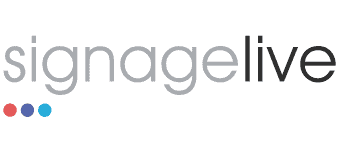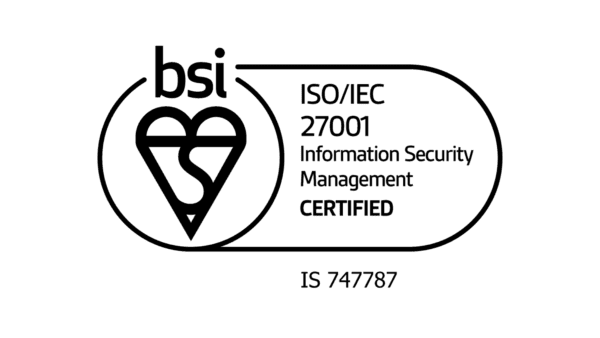What is employee recognition and how can digital signage help? [+VIDEO]
So, what exactly is employee recognition and how can digital signage help achieve this? The chances are that if you’re a CEO or People/Talent/HR Manager looking to motivate – and retain staff, you’re likely to have heard of the concept. You may even have rolled out a scheme to support it.
It has become something of a buzz phrase, but there’s a lot of evidence to suggest that employee recognition might just be key to reducing employee churn and building more productive and inclusive work cultures.
According to research, in the US alone, over 65% of employees feel like they receive no recognition in the workplace. This feeling of being undervalued has been linked to a number of business problems, including talented employees’ under-performing, or walking away from their jobs altogether. The cost to companies cannot be overestimated. It disrupts the customer experience, and according to another Gallup study, can cost twice as much as an employee’s yearly salary to find a suitable replacement for a staff member who leaves a company.
What is employee recognition?
It might seem obvious, but to understand how to better build employee recognition, it’s important to have a clear definition of what true employee recognition actually is. Where some businesses fail in employee recognition is by assuming that impersonal, non-specific shout-outs and awards will be enough to make staff feel appreciated.
To properly understand the concept, it might be helpful then to dip into some motivational theory, and use the framework of psychologist, Abraham Maslow’s Hierarchy of Needs. According to this, to be motivated and achieve self-actualisation and fulfil your potential, you need, amongst other more basic physiological needs, to have self-esteem. However, to have adequate self-esteem, you need to feel like others recognise and respect you, and for this to be reflected in the status attributed to you. What’s more, to work well and feel confident, people must have safety, that is, in the context of a workplace, the reassurance that they are allowed to experiment and be assertive in their roles.
Maslow’s theory gives us better insight into employee recognition by
- Framing it as central to an individual’s motivation to succeed
- Highlighting the need to help build an individual’s self-esteem with actions that afford them the credit they deserve.
In other words, if you expect employees to feel comfortable and perform to their utmost ability, then you need to credibly build them up, and consistently acknowledge and reward every achievement.
This could simply be by publicly praising a specific behaviour, or contribution, so that everyone in the workplace community is made aware of it. Alternatively, this could be backed up with a reward, which essentially serves as an incentive for others to also emulate the behaviour.
When it’s done well, the results are immediately apparent. Most studies suggest employees who feel valued experience increased job satisfaction. The implication of this is that talented employees are probably more likely to work harder and stick with their jobs.
With the right employee recognition approach, it also becomes much easier for businesses to spot which employees deserve promotions, and for the staff members themselves to understand how to achieve them.
How can digital signage boost employee recognition?
So, how can digital signage help? Well, to embed employee recognition into your workplace culture, you’ll ideally need a communications hub and nerve centre like digital signage through which your business is easily able to
- Raise awareness for the initiative
- Share, at a glance, how every employee can succeed
- Display what incentives will be offered for high-performing employees
Publicly celebrate employee success
Digital signage is also the most impactful in-situ medium through which to publicly recognise staff, enabling everyone to see who has performed well. It affords employees status and respect in their workplace community and sets the bar for others to aspire to.
Boost employee engagement and measure it
More than this, it can help boost engagement with any employee recognition scheme, and works with numerous tools, so you’re able to track and measure the success. University Hospitals, for example, has used on-screen QR codes to encourage employee interaction with content, and to provide metrics for this engagement. A simple yet highly effective approach, it’s led to an uptick in the number of enrolments and signups for employee initiatives, and offered the hard data required to monitor and continually evaluate what’s working and what’s not.
Celebrate employee milestones
But beyond this, digital signage itself gives businesses more opportunity to show that they value employees on a day-to-day basis – that they are not just numbers who make up the workforce. It’s easy, for example, to personalise the company-employee relationship by using digital signage to celebrate employee Birthdays and work anniversaries. Global travel company, the Flight Centre has adopted digital signage to great effect, using newly installed digital signage in its London-based headquarters to celebrate staff, and, in the words of the company’s Head of International Communications, Catherine Read, create “a more inclusive, and well-informed community, in which everyone feels appreciated.”
Author and inspirational speaker, Simon Sinek, highlights another important point. He suggests Gen Z employees are focused on making an impact through their careers, and are therefore in search of companies that share their same values and missions. The implication of this is that to engage and retain the next generation of workers, it’s also beneficial for businesses to engage with, and reflect the voices of their staff.
Streamline the workload
For the execution and roll-out of any employment recognitions strategy, digital signage can offer the ideal support. Whether you have an employment incentive scheme in place and want to promote it, or just want an impactful platform to celebrate your staff’s achievements, digital signage can help.
With over 500 built-in content creation tools, including Canva, it’s easy for any staff member to design posts. Scheduling is equally simple. In fact, content can be scheduled days, even months in advance to appear at exactly the right time and date. To celebrate things like staff anniversaries, you can even automate the process with built-in tools, such as Screenfeed Connect. This HTML platform enables you to pull employee pictures and information from any file or system you connect to it, without having to write a single line of code.
Top 5 tips for enhancing employee recognition
1/ Conduct department by department research
Research what company objectives every department or team must fulfil, and what incentivises each team. It’s important to understand what they need to do to succeed, then, find the carrot that will motivate them. If you don’t build your employee recognition initiative around the goals and aspirations of each department, the risk is that you’ll end up with a scheme that’s simply not relevant to them, or inclusive.
With digital signage, you can easily create and schedule different updates, success stories and incentives, all from the same platform. Think of it as a way to create dedicated TV channels across every department floor, full of relevant employee recognition content that’s tailored to suit – and motivate each team.
2/ Work out how to measure success for every department
Don’t forget that once you’ve identified what success looks like for every department, you’ll also need a fair and transparent way of working out how to measure this. To incentivise employees, you need to let them know how they can hit the mark. Do they need to increase sales by a certain percentage, or improve safety on the factory floor? Each department will have its own metrics.
Feedback questionnaires and surveys can sometimes be used to measure success by inviting others to assess the speed/efficiency with which things are being done or the general level of customer service.
This kind of data is easy to collect and organise on any business intelligence tool, like Microsoft PowerBI, and then securely display on-screen via your digital signage for the relevant team members to analyse.
3/ Be consistent
Pay attention to every individual achievement and reward it. If it looks like only some departments, or some individuals are being recognised, this could create rifts in and between teams.
4/ Share and re-share recognition
For any kind of employee recognition to work, you need to make sure that employee achievements are celebrated across every business digital platform from social media through to digital signage. The point is that to have any effect, the workplace community needs to see employee recognition in action and understand that it’s part and parcel of the company culture.
5/ Be prepared to scale up
Make sure you have a plan to scale up your employee recognition initiative, as your business grows. There’s nothing more demoralising to employees than to see such a scheme fade away, and/or be applied inconsistently, simply because there are more team members. Digital signage minimises the work needed to manage employee recognition, offering a single platform from which you can distribute your messaging. But, also be prepared to involve more team members to create employee shout-outs and updates, if your business rapidly expands.
When done in the right way, employee recognition will not only foster a more inclusive and positive work culture, but drive the productivity and profitability of business. With the help of tools, such as digital signage, the process becomes easy to roll-out and maintain, giving the initiative the visibility and engagement it needs to have an impact on every department floor.
More articles you might like:
Signagelive digital signage bridges communications gap for Babraham Research Campus
Beyond Housing teams up with Signagelive to drive corporate communications success
Top benefits of data-driven digital signage
How to choose the right digital signage content management system for your business





